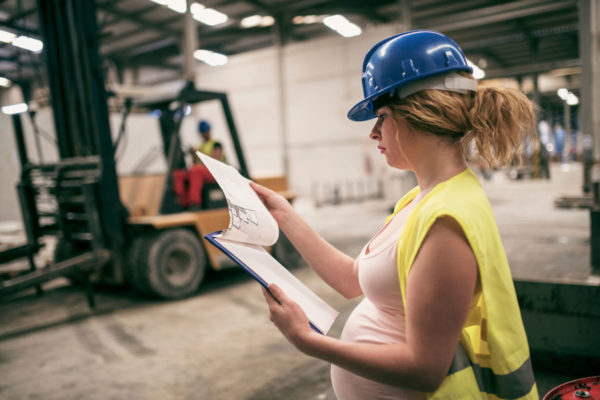Employers are responsible for providing a safe working environment while effectively managing risks to the health and safety of all workers, including women of a childbearing age.
You must carry out an specific individual risk assessment for pregnant workers and new mothers. This applies to workers who:
- are pregnant
- have given birth in the last 6 months, or
- are currently breastfeeding
Some working conditions and processes can potentially harm them and/or their child so they must be assessed and suitable and sufficient controls introduced for the risks posed in each case.
It’s important for employers to support pregnant workers and nursing mothers equally. The legal protections outlined in the guidance also apply to some transgender men, non-binary people and people with variations in sex characteristics, or who are intersex.
Once your worker has informed you in writing, you must complete an individual risk assessment and make any necessary changes to support them:
- Review your existing general risk management and controls for pregnant workers and new mothers. Talk to them to see if there are any conditions or circumstances with their pregnancy that could affect their work
- Discuss any concerns they have about how their work could affect their pregnancy
- Consult with their safety representative or trade union if they have one
- You must take account of any medical recommendations provided by their doctor or midwife.
- You must regularly review your worker’s individual risk assessment and make any necessary adjustments:
- as the pregnancy progresses
- if there are any significant changes to your workers’ activity or workplace
Working conditions could present a risk to mother and/or child at different stages. As the pregnancy progresses, it may affect your worker’s:
- dexterity
- agility
- coordination
- speed of movement
- reach
Once you have completed the individual risk assessment, record your findings and share these with your worker and their safety representative if they have one. It is important to explain how you will keep them and their child safe.
If you identify a risk that could cause harm to your worker or their child, you must firstly decide if you can control it, If you cannot control or remove the risk, you must do the following:
Action 1 – Adjust the working conditions or hours to avoid the risk.
If that is not possible:
Action 2 – Give them suitable alternative work. The employment Rights Act 1996 states that suitable alternative work should be offered, where appropriate, before any suspension from work. This must be suitable and appropriate for the pregnant worker or new mother, and on the same terms and conditions, including pay.
If that is not possible:
Action 3 – Suspend your employee on paid leave for as long as necessary to protect their health and safety and that of their child. If you cannot put the necessary control measures in place, you must suspend the worker on full pay in line with the Management of Health and Safety at Work Regulations.
If you employ gig economy, agency or temporary workers who are pregnant or new mothers, you will have duties under health and safety law. For health and safety purposes, they should be treated no differently to other workers.











